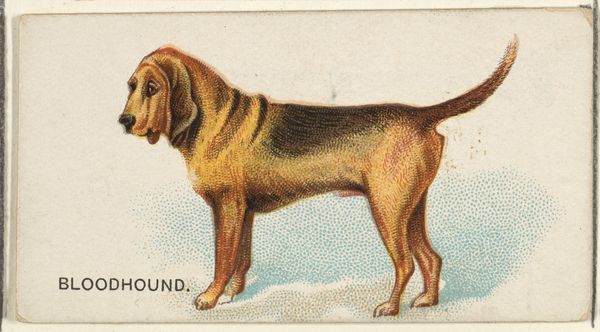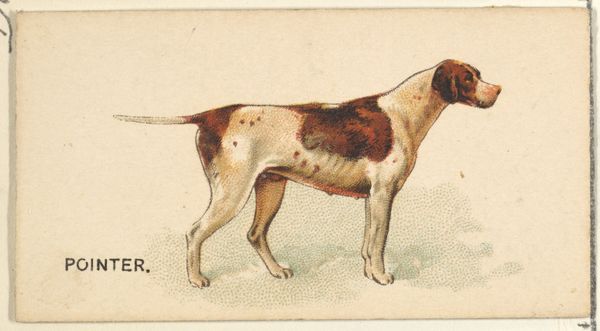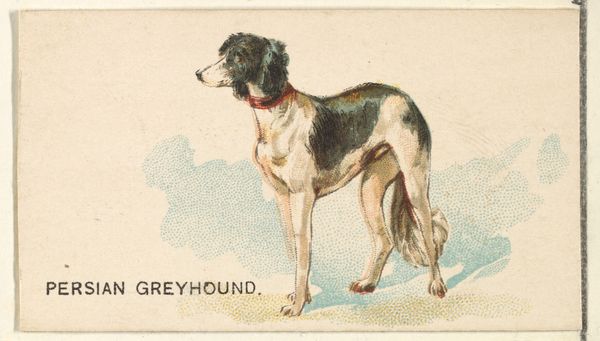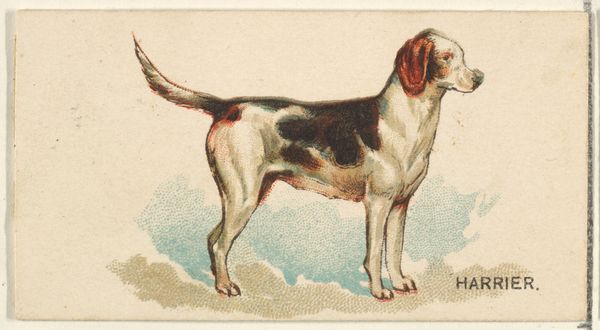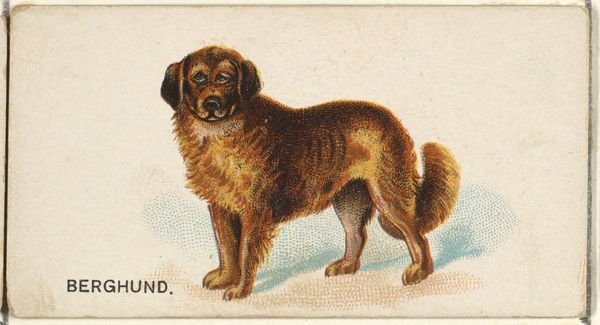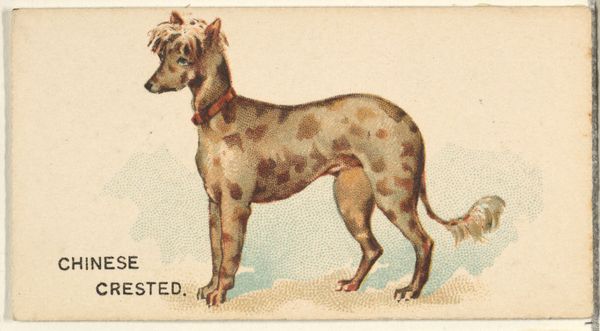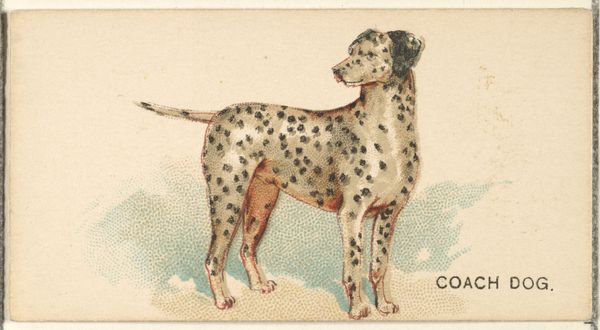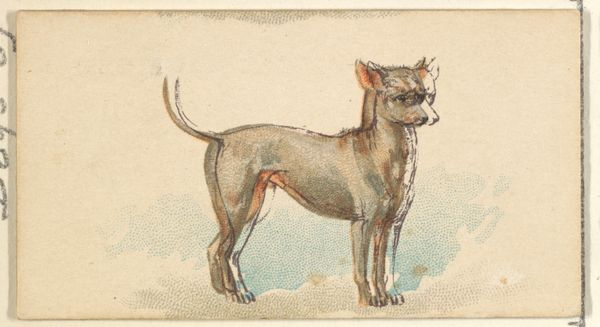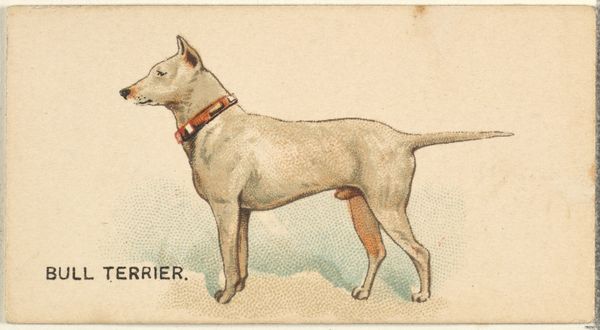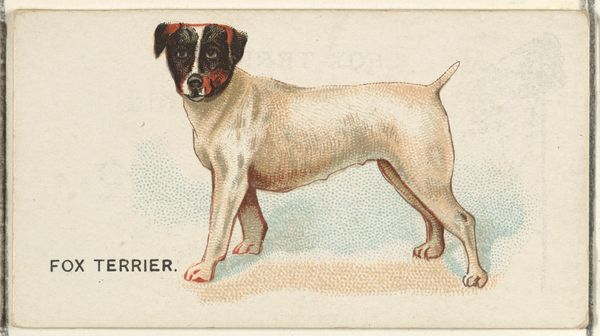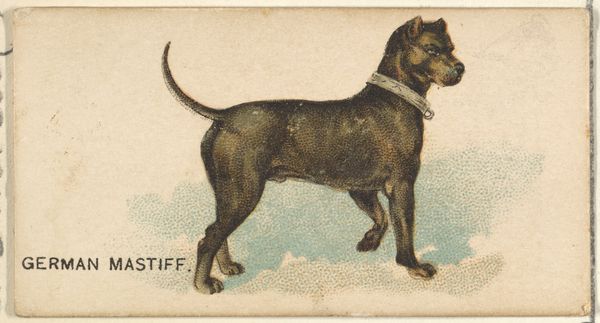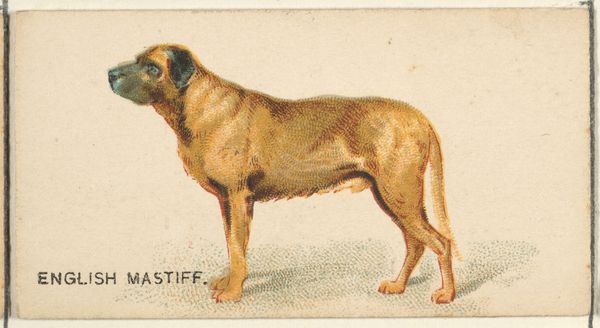
Greyhound, from the Dogs of the World series for Old Judge Cigarettes 1890
0:00
0:00
drawing, print
#
drawing
#
animal
# print
#
realism
Dimensions: sheet: 1 1/2 x 2 13/16 in. (3.8 x 7.1 cm)
Copyright: Public Domain
Curator: Here we have a card from Goodwin & Company's "Dogs of the World" series for Old Judge Cigarettes, dating to around 1890. It's a print, specifically a drawing, featuring a greyhound. Editor: It’s elegant, isn’t it? The subtle coloring, the way the artist captured the muscular leanness... but it seems fragile. Curator: These cards were hugely popular, inserted into cigarette packs to stiffen them and to encourage collecting. They offer us a fascinating insight into popular culture and visual representation at the time. They were like miniature windows onto a carefully curated world. Editor: Carefully curated indeed. You know, looking closely, I am really drawn to the way the printing process allows you to feel the mark making: how the subtle hues of color in the dogs fur are delineated and feel both deliberate but natural, real. It is industrial, certainly, a means of promotion—yet hand-done somehow, too. Curator: Absolutely. The cards speak volumes about consumerism and how manufacturers used images to build brand loyalty. This series positioned dogs—especially breeds like the greyhound—within a context of luxury and aspiration. Old Judge was very astute, branding to emerging upper classes. Editor: And this isn't a portrait of just *any* dog, right? The choice of a greyhound is significant. A sleek, racing animal. But rendered here...it's not in motion; instead there's a languid quality to the animal’s stillness that somehow echoes the pleasure one is meant to get from a cigarette. How it must feel for the body. Curator: A beautiful connection! And note how these trading cards elevated the mundane—packaging material—into a collectable. Inexpensive print became something of value within this social exchange system. Editor: The question of "value" is an interesting one. Something we think of as so disposable becoming not only collectable but something held in museum collections. That trajectory, in and of itself, speaks to societal and industrial changes over the past century and a half. Curator: Well, it certainly offers plenty to consider about the convergence of marketing, class, and visual culture in late 19th century America. Editor: It does indeed; I will think differently about how the disposable is, itself, carefully constructed.
Comments
No comments
Be the first to comment and join the conversation on the ultimate creative platform.
